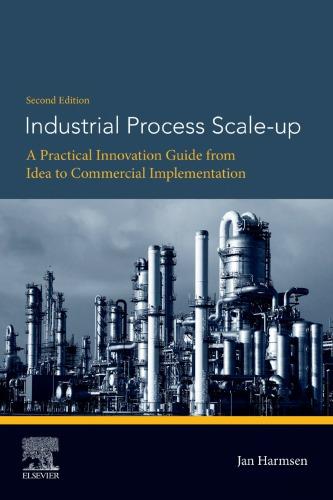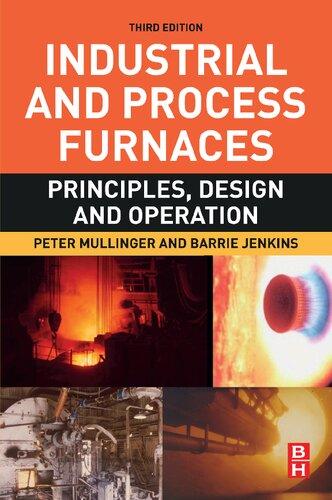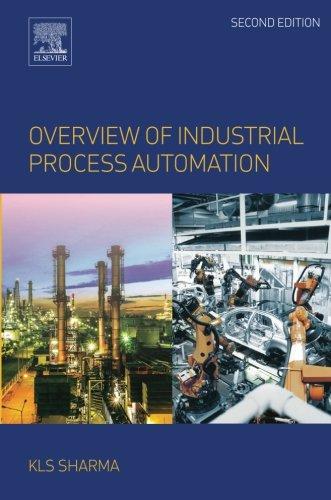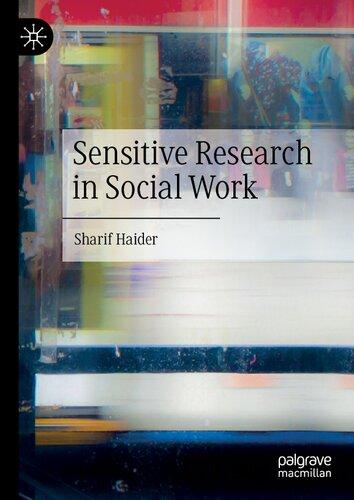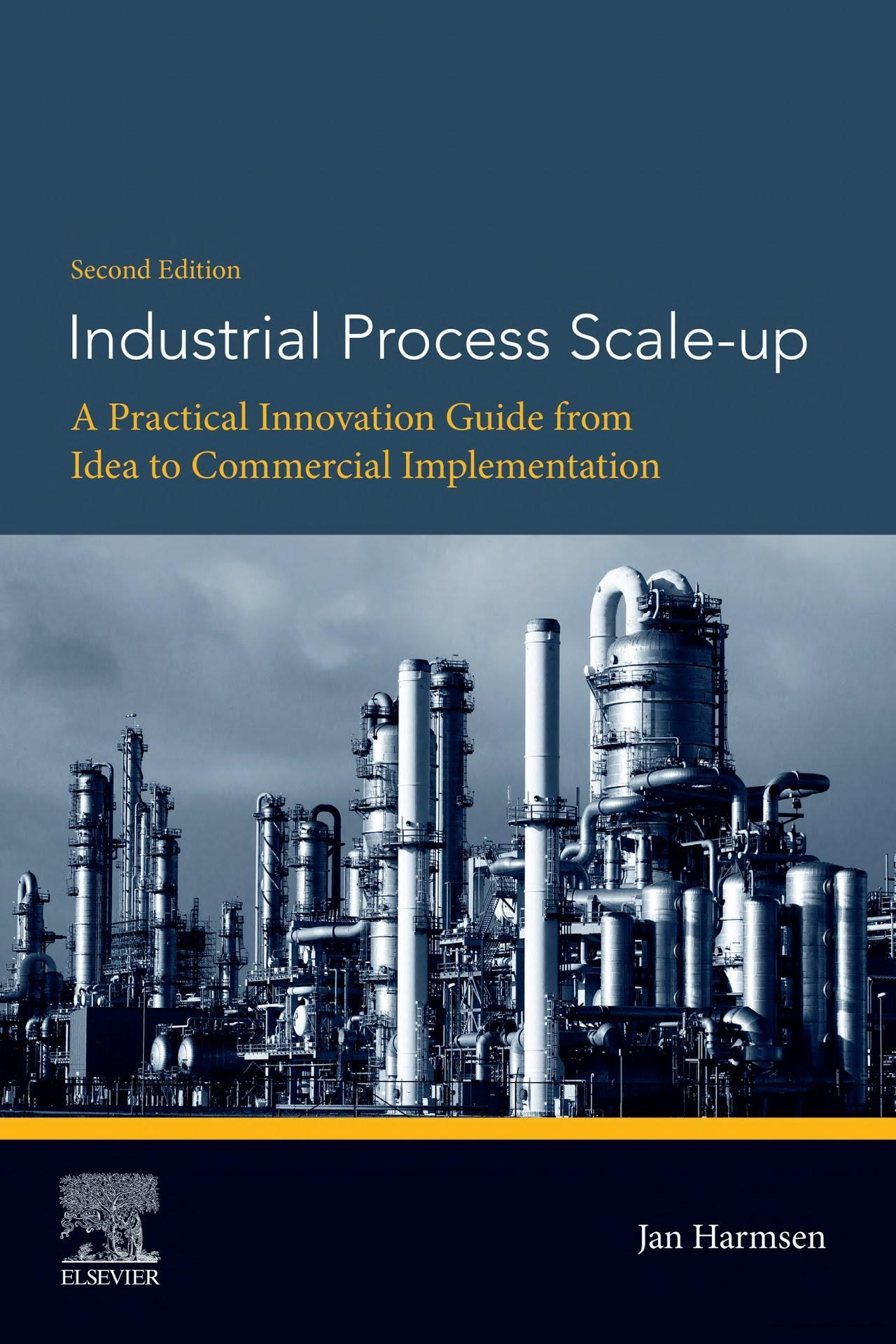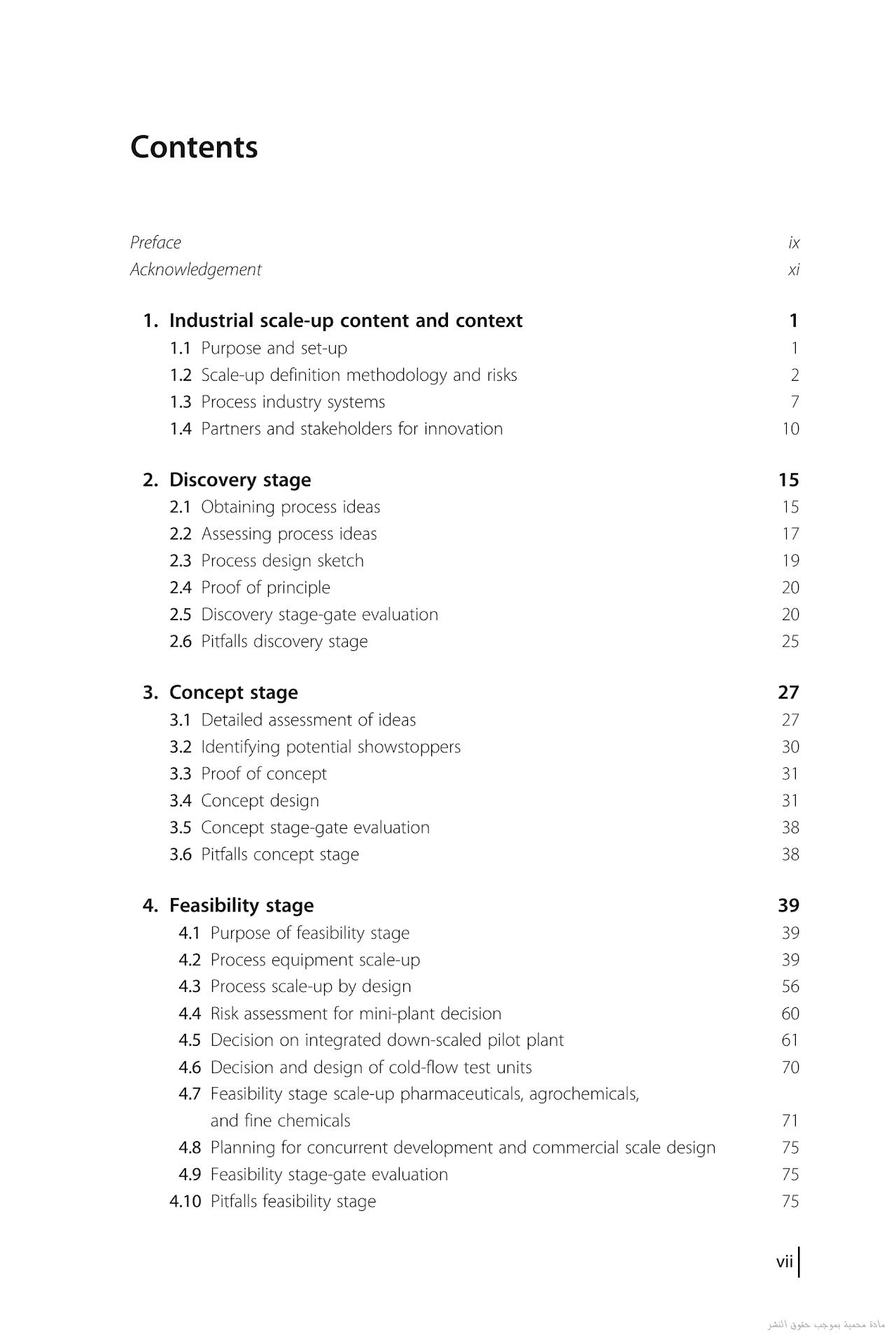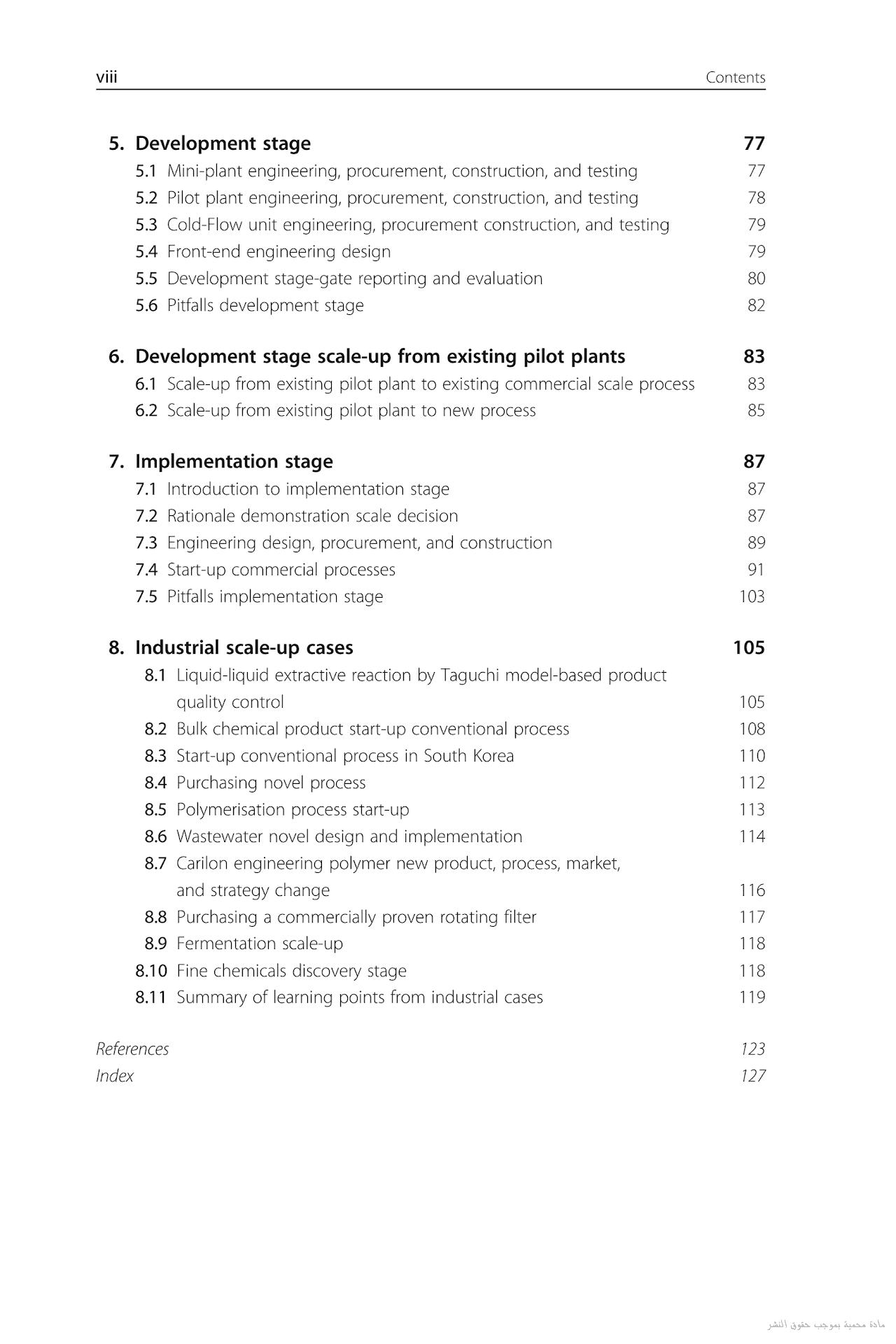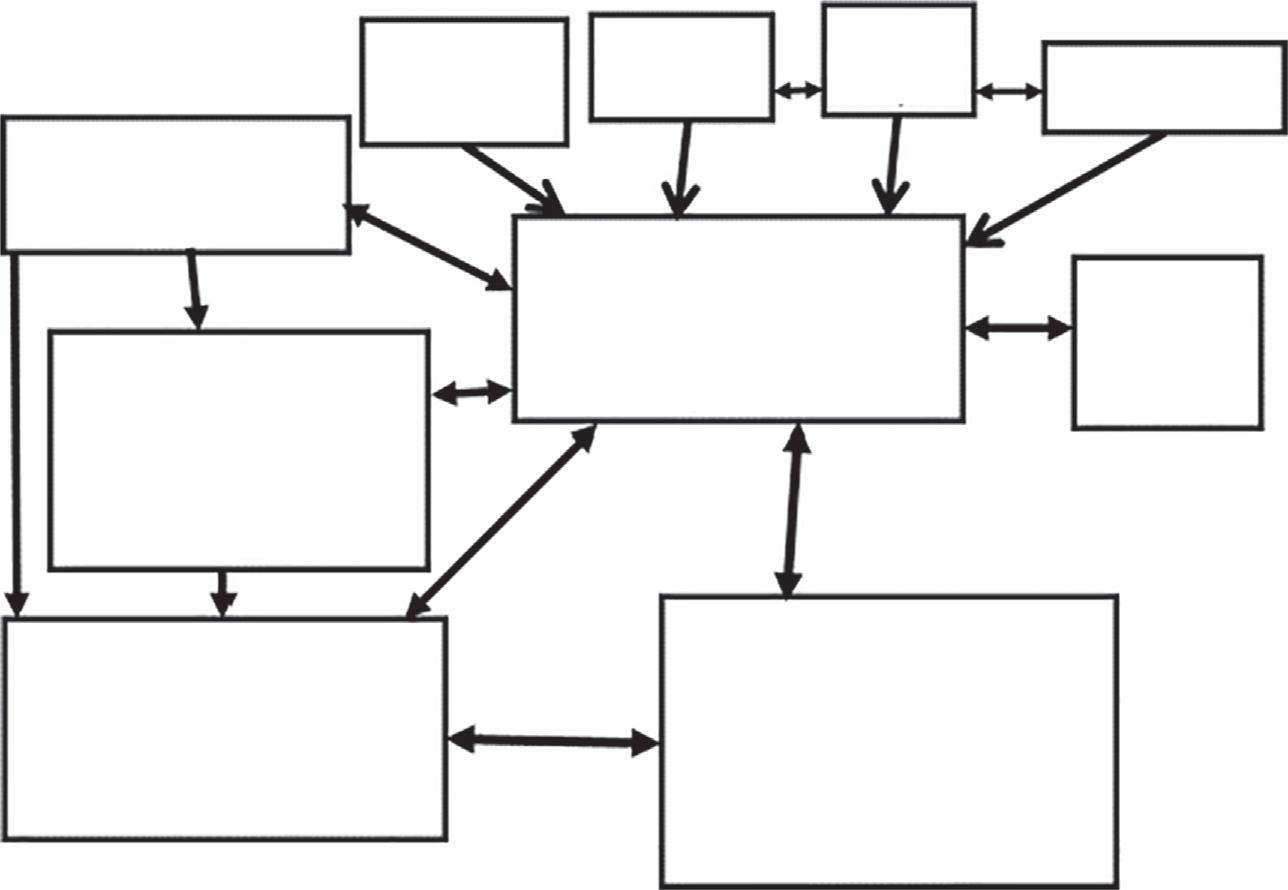Industrialscale-upcontent andcontext
1.1Purposeandset-up
Thisbookismainlymeantforindustrialprocessinnovators.The methodsandguidelinesprovidedfortheminthisbookservethreepurposes. Thefirstpurposeistoprovideguidelinessothatprocessinnovationprojects canbeturnedintosuccessfulcommercialscalestart-ups,ratherthanfailures. Thesecondpurposeistoobtainthebestprocessconceptintermsofeconomicsandothercriteria,sothatthenewprocessisacceptedbysociety andiscompetitiveinthemarket.Thethirdpurposeistoprovideguidelines tohaveinnovationprojectexecutionsthatarelowestincostandin elapsedtime.
Theneedforthisbookismainlybasedonthestatisticsthat50%ofnovel processintroductionsaredisasters(Bakkeretal.,2014).Adisaster,here,is definedashavingmorethan30%costgrowthbeyondthebudgetandmore than38%scheduleslippage.Thestatisticshavebeengatheredfromover 12,000projectsfromallkindsofprocessbranchesbyIndependentProject Analysis(IPA),asreportedby Bakkeretal.(2014).Also,mega-scale projectsoftenfail,asreportedby Merrow(2011) and Lager(2012).Several projectshadnotreacheddesigncapacityeven5yearsafterthebeginningof thestart-up.
Theeffectsofacommercialscaleimplementationfailureforacompany canbeenormous.Itisnotonlytheadditionalcapitalinvestmentneededand therevenuelosses,butalsothelossoftrustofclientsthatthecompanyfaces regardingdeliveringtheirproductsaspromised.Italsomeansthelossoftrust oftopmanagementintheinnovationpowerofthecompany.Thiscan stronglyaffectthebudgetforfutureprocessinnovationprojects.Alsofor technologyproviders,animplementationfailurecanhavealargenegative effectonfuturesales.
Theset-upofthisbookfollowsthestage-gateapproach.Thestagenames areobtainedfrom Harmsen(2018).Forthefirststage,discoveryandconcept methodsandguidelinesarepresentedthatensurethatthebestconceptis identifiedandselected.Inthesubsequentstages,methodsandguidelines arepresentedtoreducetheriskofimplementationtosuchalowlevelthat start-upcostandstart-uptimesstaywithinthebudget.
Becausepartoftheinnovationprojectfailuresisduetotakingshortcuts oftheavailableguidelines,pitfallwarningsareaddedateachstage-gatechapter.Throughoutthebookstartingwith Section1.3.3,itexplainsandshows whyprojectinnovationshortcutsnearlyalwaysendincommercialdisasters.
Thenatureofthisbookisprescriptiveandnotdescriptive.Theguidelinesandmethodshavebeenprovenorareplausible.Theseguidelinesand methodscanbeusedtogenerateessentialdesigninformation,toassessrisks andtomitigateriskstosuchalowlevelthatcommercialimplementationis successful—andtheinnovationpathwayisrapidandefficient.Thisbookalso providesrealindustrialinnovationcaseswithadditionallearningpoints.The bookisadescriptionofanindustrialbestpracticeforscale-up.“Anindustrial practiceisacooperativehumanactivityinwhichdifferentprofessionaldisciplinesworktogethertodevelop,produceandsellaproduct”(Verkerk etal.,2017).Majorprofessionaldisciplinesinvolvedinspecificinnovation stagesare,therefore,mentioned.
Thebookisintendedforindustrialprocessresearchersanddevelopersof processindustrybranches.Specialattentioninthisbookisgiventopharmaceuticalandfinechemicalprocessesforeachinnovationstage.Furthermore, itwillbeofuseforcontractresearchersandtechnologyproviderstoseehow andwhentheycaninteractwithprocessindustrymanufacturersandengineeringcontractors.
Thebook,however,doesnotcontaindescriptionsonhowtomanage andorganiseindustrialresearch,development,design,andprocessengineering.Italsodoesnotcontaindetailedprocessdesignguidelinesforthecommercialscaledetaileddesign.Forthat,thereaderissuggestedtoreferother booksonindustrialmanagementandprocessengineeringsuchas Harmsen (2018), Bakkeretal.(2014), DalPont(2011a,b),and Lager(2010)
1.2Scale-updefinitionmethodologyandrisks
1.2.1Scale-updefinition
Often,thetermscale-upisusedtosimplystatethatalargerproduction capacityisemployed,withoutanyreferencetowhetherthisscale-upwas
successfulandhowthisscale-upwasachieved.Toalsoincludetheseelementsofscale-up,weusethefollowingdefinitioninthisbook:
Processscale-upisgeneratingknowledgetotransferideasintosuccessful commercialimplementations.
Knowledgegenerationinvolvesliteraturereading,consultation,experimenting,designing,andmodelling.Themainpurposeofthisknowledge generationistobeabletoassessrisksandtoreduceriskstoacceptable levelsforthesuccessfulcommercialscaleimplementation.Theword “ideas”isstatedinthisdefinitionratherthan“concepts”,asconceptgenerationfromideasisalsoconsideredpartofthescale-up.Also,theterm“scaleupfromlaboratoryscale”isavoidedaslaboratoryexperimentsarealsopartof thescale-upknowledgegeneration.
Successfulimplementationmeansthatthecommercialscaleprocess meetsthedesigntargetswithintheplannedstart-uptime.
Thepurposeofindustrialprocessscale-upisthenmainlyriskreduction neededforsuccess.Forpeopleworkingintheprocessindustries,thisisa nearlytrivialstatementandMerrow’sbookonindustrialmegaprojects, basedonmorethan1000industrialcases,provesthat,indeed,indirectcommercialimplementationwithoutproperindustrialresearchanddevelopment,therisksoffailurearealwaystoohightotake(Merrow,2011).
Formostacademics,however,thisstatementisnottrivialatall, becauseintheacademicworldthepurposeofresearchistogenerate understanding,knowledge,andtheor y.Theword‘risk’doesnotenter inresearchpapersaboutprocessinnovationandisalsonotfoundinprocessinnovationbooks. Jainetal.(2010) donotcontainanydescriptionof agoalforinnovation. Vogel(2005) and Betz(2011) onlystatethatthe goalofindustrialresearchanddevelopmentistoachievecompetitive advantages.
1.2.2Scale-upmethodology
Thescale-upmethodologyofthisbookisbasedonknowledgegeneration forriskidentification,riskassessment,andriskreduction.Riskidentification ofanewprocessconceptisalreadyverydifficult,becausenotallrelevant informationwillbeavailable.Ifacertainpieceofinformationisnotavailable,thenitmaybeidentifiedasanunknown.Butforcertainriskseventhat informationmaybelacking;Ievendon’tknowwhatIdon’tknow. Table1.1 showsthesetwodifferenttypesofknowledgegaps,theirassociated risksandinformationplanstoclosetheknowledgegaps.
Table1.1 Typesofknowledgegaps,risks,andknowledgegenerationplan
KnowledgegaptypeRisktype
Knowledge generationplan
IknowwhatIdon’tknowSpecificandlimitedSpecificresearch Idon’tknowwhatIdon’tknowUnknownIntegratedprocesstest
Riskidentificationis,therefore,carriedoutseveraltimesduringthe innovationproject.Eachtimemoreinformationhasbeengenerated,more risksitemswillbeidentifiedandconsequentlyriskassessmentwillimprove. Iftherisksaretoohigh,riskreductionplanswillbemadeandexecutedinthe nextinnovationstage.TheriskdimensionsenvisagedareSafety,Health, Environmental,Economical,Technical,andSocial(SHEETScriteria definedin Harmsen,2018).Themethodologyfocuses,furthermore,on guidelinesandmethodsthatarecost-effectiveandefficient.Theeffectivenessisobtainedbyprovidingguidelinesonprojecttargetandconstraints.
1.2.3Stage-gateinnovationmethod
Innovationisdefinedhereasprojectmanagementfromideatocommercial implementation.Theinnovationeffectivenessandefficiencyareobtained bythestage-gateapproachdescribedby Harmsen(2018).Thismeansthat potentialfailuresfortheprojectarediscoveredasearlyaspossiblewithlittle effortand,iftheycannotbecorrected,theprojectstops.Forthestructureof thisbook,weusethemostelaboratestagenomenclaturemostlyusedforthe chemicalssectorasagenericstructure:
•Discovery
•Concept
•Feasibility
•Development
•Detaileddesign(includingprocurementandconstruction)
•Start-up
OtherindustrysectorssuchasfoodandOil&Gashavedifferentstagenames, butthestagesequenceandcontentareverysimilar.Theseare,therefore, easilytreatedinthisbookusingthegenericstructure.
Forthefoodsector,thestagesare(Verver,2018):
• Orientation:ideaandconceptgeneration
• Creation:processdevelopment:lab-scale,bench-scale,pilotplant
• Preparation:engineering,construction,commissioningstart-up
• Implementation:commercialproduction
FortheOil&Gassector,thestagesare(Bos,2014):
•Discovery
•Development
•Demonstration
•Deployment
Forpharmaceuticals,thestagesinvolved,obtainedfrom Levin(2006) and Kane(2016),are:
• Discoverystage:Thenewmoleculeisassessedonitsactivity.
• Pre-clinicalstage:Thenewactivemolecule(product)isdefined.
• ClinicalphaseIstage:Thenewproductanditsformulationaremadeina small-scalepilotplantfortests.
• ClinicalphaseIIstage:Thenewproductismadeinintermediatescalepilot plantforfurtherclinicaltesting.
• ClinicalphaseIIIstage:Newproductismadeatlargerscaleplantforstudieswithmanypatients.
• Approvalstage:Theproductisapprovedbytheregulatorybodyanddecisionforcommercialscaleproductionistaken.
• Manufacturingstage:Thenewproductisproducedandsold.
Specialattentionispaidineachchaptertoprocessinnovationstepsforall industrysectorsandtoprocessinnovationforpharmaceuticalindustry. Section4.7treatshowandwhentoconsiderprocessoptionsforthat industrysector.
Hereisabirds-eyeviewofgenericstagesandtheircontent.Inthediscoverystage,aproofofprincipleexperimentiscarriedoutatlaboratory scale.Intheconceptstage,onlyinformationisgeneratedforafeasibleprocessconceptdesign.Inthefeasibilitystage,acommercialscaledesignanda down-scaledpilotplantdesignandcostingaremade.Dependingonproductionscaleandoverallcomplexityofarespectiveindustrialprocess,onecan differentiatebetweenadedicatedintegratedpilotplantorpilotingofindividualunitoperations.Inthestage-gate,adecisiontoinvestinthepilot plant,giventheeconomicprospectofthecommercialplant,ismade. Theimplementationstageinvolvesdetailedengineering,procurementof equipment,construction,commissioning,andstart-up.
Forade-bottleneckingproject,itisadvocatedtoalsofollowallinnovationsteps,ratherthandirectlystartwiththeendofthedevelopmentstep; definingthefront-endloadingforthenextstep.Bystartingwiththediscoverystep,variousde-bottleneckingoptionsareconsidered.Intheconcept stage,thebestoptionsaredefinedandthebestselected.Inthefeasibility stage,thebestoptionisworkedoutinadesign,evaluated,andallrisks
areconsidered,andinthedevelopmentstage,somenewaspectscanbetested. Theseextrastepsmaytakeafewweekstoafewmonths,butwillimprovethe qualityofthede-bottleneckingprojectconsiderably.
Ineachsubsequentstage,moreinformationisgenerated,risksare moreclearlyidentified,andmorerobustlymitigatedtoacceptablelevels. Ifatanystage-gatetherisksareestimatedtobetoohigh,orthecostoffurtherdevelopmentishigherthanthefinalbenefitsofcommercialoperation, thentheprojectisstopped,sothatonlyasmallamountofmoneyislost.In thisway,innovationisnotonlyeffectivelybutalsoefficientlyexecuted. Thisstage-gateapproachfacilitates,furthermore,communicationabout thestatusoftheinnovationtointernalandexternalstakeholdersandto externalinnovationpartners.
1.2.4Scale-upanddesignrole
Makingdesignsplaysaroleineachinnovationstage.Makingadesignfirst revealsknowledgegaps,whichleadstoaplantofillthegaps.Second,the designresultisacommunicationmeans,asitshowswhattheinnovation isabout.Foreachinnovationstage,asectionondesignwill,therefore,be included.Asthestagespromote,thelevelofdetailinthedesignsincreases aswell.
1.2.5Scale-upbehaviourandrisks
Thissectionprovidessometechnicalinsightwhyprocessscale-upsoeasily goeswrongwhencriticalsuccessfactorsforscale-upinresearch,development,anddesignarenotfulfilled.Theinsightisprovidedbythefollowing aspectsofnewprocesses:
A: Chemicalreactivity,includingcorrosionrates,caneasilyvarybya factor109 bysmallchangesin,forinstance,watercontent,traceamounts oforganicacids,halides(chorine),ormetalions.Thesetracecomponentsmaybeinthefeedstotheprocessorformedintheprocess. Theeffectofthesecomponentscanberapidcorrosion,foaming,and/ orfouling,causingtheprocesstofail.Thisbehaviourmaynotshow upinlaboratorytestswithpurefeedstocksandshorttestdurations.
B: Thenumberofparametersinaprocesseasilyexceedsa100.The combinedbehaviourofsmallchangesinparametersoftencannotbe predictedwellbymodels,e.g.duetotheirstrongnon-linearinteractive behaviourandthelackofthermodynamicandphysicaldatatosupport thecomputationalmodels.
C: Dynamictimescalesforcomponentstobuildupintheprocesscanbe verylong,intheorderofmonths,inparticularwhenrecyclestreamsare involved.Thesebuild-upswillnotshowupinshortdurationlaboratory scaletests.
D: Thehydrodynamicbehaviourandtheireffectonmasstransfer,heat transfer,mixing,andresidencetimedistributionoftenchangewith scale-up,causingapoorperformanceofreactors,heatexchangers, andseparators.
E: ThecombinedeffectofA,B,C,andDcannotbepredictedby models.
AspectsA–Caredealtwithin Chapters2and3.AspectsDandEaretreated in Chapters3–5 1.3Processindustrysystems
Valuechainsarestringsofintermediateproductmassflowconnections betweencompaniesandthefinalconsumers.Eachcompanyaddseconomic valuetothemassflows.Thesevaluechainsfromnativefeedstocktoconsumerproductscanbeshortandinvolveonlyafewbranchessuchasinbasic foodproducts.
Itcanalsobeverylongsuchasinconsumerfoodproductsmanufacturedfrommultipleingredients,suchasinfantformula,orinconsumables(e.g.soap),wherethestepsinvolvecrudeoilrefining,steamcracking, higherolefinconversiontoalcohol,andthenblendingwithfragrancesand otheradditives,eachwiththeirownsupplychain.
If,forinstance,thecrudeoilfeedstockischangedintoarenewablefeedstock,theningeneralthisalsomeansthatnewconnectionsbetweenindustry branchesmustbenegotiated.Thesameholdswhenanewproductforanew marketisdeveloped.However,newproductdevelopmentisoutsidethe scopeofthisbook.
Innovationinvolvingnewpartnerstakes,ingeneral,considerabletimeas companiesthathithertohadnocontactandhavetheirownvocabularynow mustlearntocommunicate.Thelargestmiscommunicationsoccurwhen bothusethesameterm,butmeantotallydifferentthingsaboutit.
Anexamplefrommyownexperienceisofthetermscale-up.Inajoint researchprogrammeforanewprocessofapetrochemicalcompanyanda pharmaceuticalprecursorproductioncompany,wediscussedthenextstep aftertheresearch.Thepetrochemicalcompanyconsideredthescale-upabig
stepinvolvingmanyyears.Thepharmaceuticalprecursorcompanyconsideredthisasmallstep.Afteralongdiscussion,thepetrochemicalcompany said:“Butscale-upinvolvesdesigningandbuildingapilotplant”,upon whichtheothercompanypeoplesaid:“Wealreadyhavethepilotplant”. Thenitbecameclearthatbothusedtheword“scale-up”,buttheymeant differently.
Thetermlifecycleis,ingeneral,usedincombinationwiththeword analysisorassessment.Inlifecycleassessment(LCA),allprocessstepsfrom nativefeedstocktodestinationsuchaswasteincineration(calledcradle-tograve)ortoendofcyclerecycleandreuse(calledcradle-to-cradle)aretaken intoaccountandalsoallmassinputsfromnatureandallmassoutputsto nature.Thedifferencesbetweenlifecyclesandvaluechainsarethat,firstly, lifecyclesareaboutallmassflowsrelatedtoallsteps,whereasvaluechainsare abouteconomicallyaddedvaluesbyeachstepand,secondly,thatlifecycle assessmentisusedtodeterminethetotalenvironmentalimpactofaproduct overthewholelifecycle.
1.3.2Industrialcomplexes
Inindustrialcomplexes,manyprocessesareconnectedinmanyways.Often, processesareownedbydifferentcompanies.Thecomplexesoftencontaina crudeoilrefinery,asteamcracker,producingolefinsfromasidestreamof theoilrefinery,andseveralchemicalprocessesconvertingolefinstochemicalintermediateproductssuchaspolymers,solvents,resins,andothers.The processesareconnectedwithmanydifferentstreamstoeachother.Inthe Rotterdamindustrialcomplex,forinstance,anintermediateproducer Huntsmanisconnectedwith18differentstreamstotheotherplantsin thecomplex(Harmsen,2010a).
1.3.3Processes
Thesimplestdefinitionofaprocessisasystemofconnectedunitoperations thatconvertsafeedstockintoaproduct.
Formostapplications,bothfeedstockandproducthaveclearspecificationsandcanbeboughtandsoldonthemarket.However,manyproducts mustmeetperformancespecifications,e.g.nutritionalvalueoftaste.For thoseproducts,anewprocessalsomeansextensiveproducttestingtoensure thattheproductisacceptedbythemarket.Evenforanewprocessforan existingspecificationproduct,someproducttestingbytheclientswillbe needed.Specificationsdonotcompletelydefineaproduct.Newtracecomponentsmaybepresentintheproduct,forwhichnospecificationhas
yetbeendefined.Theclientmayalsohaveexpectationsfromtheexisting product,whicharenotdefinedbythespecification,suchasdescribedin Section8.1.
If,also,theproductisnew,thenproductdevelopmentisneeded.How toexecuteacombinationofproductandprocessinnovationisgivenindetail by Harmsen(2018).
1.3.4Unitoperations
Processtechnologiesofalltheseindustrieshaveincommonthefactorthat theyarebasedonclassicunitoperations.Eachprocessconsistsofoneor moreunitoperations.Eachunitoperationhasitsowngenericknowledge baseofacombinationoftransportphenomenaofmassandheatandmomentumandtheircorrespondingthermodynamics.Incaseofreactors,chemical conversionisaddedtothesephenomena.
Unitoperationsbasedonfluidmechanicsincludefluidtransport(suchas pumpingandpipe-flow),mixing/agitation,filtration,clarification,thickeningorsedimentation,classification,andcentrifugation.Operationsbased onheattransferincludeheatexchange,condensation,evaporation,furnaces orkilns,drying,coolingtowers,coolingandevaporativecrystallisation,and freezingorthawing.Operationsthatarebasedonmasstransferinclude distillation,solventextraction,leachingandabsorptionordesorption, adsorption,ionexchange,humidificationordehumidification,gaseousdiffusion,crystallisation,andthermaldiffusion.Operationsthatarebasedon mechanicalprinciplesincludescreening,solidshandling,sizereduction/ grinding,flotation,filtration,andextrusion.Designmethodsfortheseunit operationscanbefoundinhandbookssuchasPerry’sChemicalEngineeringHandbook.
Formostcommercialscaleunitoperationsconcept,designcomputer packagesareavailableinso-calledflowsheetcomputerprograms.Scaleupoftheseunitsstill,however,hasrisksiftheunitoperationhasnotbeen appliedatcommercialscaleforthatapplicationand,inmostcases,pilotplant developmentisrequiredtovalidatethedesignmethodsappliedandtoidentifytheunknown-unknownstotheextentpossible. Chapter4 provides methodstodecideonwhetherapilotplantisneeded.
1.3.5Majorprocessequipment
Eachunitoperationconsistsofacombinationofmajorprocessequipment connectedbypipesandflanges.Adistillationunitoperation,forinstance, willconsistofacolumnwithinternals,aheatexchangeratthetopand
thebottom.Itmayhavepumpstocirculatethefluidflowsthroughtheheat exchangers.Thesetypesofequipmentarecalledmajorprocessequipment. Atscale-up,majorprocessequipmentwillalsoincreaseinsize.Reliable designandconstructionofthelargescaleisofutmostimportanceforsuccessfulimplementation.
1.3.6Dispersedsystemlevel
Thedispersedsystemlevelisaboutbubblesinaliquid,catalystparticlesina reactor,andotherdispersedphasesinacontinuousphase.Masstransferand mixingareimportantphenomenaatthissystemlevel.Thesephenomenaare veryimportantfortheprocessperformanceandare,ingeneral,scaledependent(andapplication-dependent).
1.3.7Chemistrylevel
Thechemistrylevelisthesmallestsystemscaleofrelevancetoprocesses.At thislevel,chemicalreactionsaredescribed.Often,thesereactionsarefacilitatedbyacatalyst.Thecatalystitselfisconsumedinthisconversion,but enhancesormoderatesthevariousreactionvelocitiesbychangingtheactivationbarriers.Ifthecatalystspeedsupthedesiredreactionrelativetothe undesiredreaction,italsoincreasesthereactionselectivity.Catalyststypicallyareverysensitivetosmallchangesinconditionssuchastemperature andtolowconcentrationsofimpurities,whichmaycomefrominputsto theprocess,fromcorrosionofconstructionmaterials,andfromundesired reactionsinhotareassuchasdistillationbottoms.
1.4Partnersandstakeholdersforinnovation
Thefollowingindustrypartnersandstakeholderscanbedistinguished:
Academia Contract Research
Concepts theory New feedstock Publicity Vote complain Laws Process development process design Start-up Operation
Organisations Technology providers
Suppliers NGO Civilians Government Clients Manufacturer
Development test
Experimental tests Pilot plant Critical engineering aspects
Engineering contractors
Detailed design Procurement Construction Dismantling Feedback Stop buying
Fig.1.1 Rolesandrelationsinnovationpartnersandstakeholders.
Fig.1.1 showstheirpotentialrelationsinprocessinnovation.Thesepartners andstakeholdergroupswillbeshortlydescribedinrelationtoprocessinnovation.Manufacturersarecompaniesthatconvertfeedstocksfromsuppliersinto productsfortheirclients.Often,thesecompanieshavearesearchanddevelopmentdepartmenttogeneratenewprocesses.Also,employeesdirectly involvedinthemanufacturingprocessareasourceofprocessinnovationideas. Manufacturersintheprocessindustriesareclassifiedintobranches. Themajorbranchesarethefollowing:
-Crudeoilrefining
-Metalorerefining
-Paperandpulp
-Bulkchemicals
-Fineandspecialtychemicals
-Pharmaceuticals
-Food
-Agriculturalproducts(feed)
-Consumables
-Ceramics
Eachbranchhasitsowncharacteristicsintheprocesscapacitiesemployed, thewaytheyoperate,andthewayresearchanddevelopmentarecarriedout.
Duetothesedifferences,technologiesproveninacertainbranchoftenfail whenappliedinadifferentbranch.
Clientsofmanufacturerscanbeindustrialcompaniesorconsumers. Industrialcompaniescaninitiateprocessinnovationatthemanufacturer byaskingforalowercostoftheproduct,oralowerenvironmentalimpact oftheproduct,orbetterproductperformance.Theyarealsoveryimportant stakeholdersinprocessinnovation,asshownintheliquid-liquidextraction caseof Chapter8
Suppliersoffeedstocksare,ingeneral,notsourcesofinnovationat themanufacturer.Butthemanufacturercaninitiateprocessinnovation byaskingasupplierforalowercostorlowerenvironmentalimpact. Innovationswithalarge totaleffectoncostandenvironmentwillmore andmorebecarriedoutbycollaborationsoveralargerpartofthe supplychain.
Governmentcanplayaroleinprocessinnovationbymorestringentlaws onsafety,health,andenvironmentandbysubsidisingprocessinnovation. Civilianslivingnearbytheprocesscanplayaroleininnovationaskingfor asafer,healthier,andenvironmentallyfriendlierprocess.
Non-governmentalorganisations(NGO)canbeasourceofinnovation inthesamewayascivilians.
Technologyproviderscanbeverysmallinnovativefirmsspecialisedin onenovelprocesstechnologyorlargerfirmswithmanyinnovativeprocess technologies.Somehavegoodrelationswithuniversitygroups,providing themwithnewideasfori nnovationstovalorise.Theyoftenhavetheir processtechnologiesprotectedbypatentsandotherformsofintellectual propertyrights,suchascopyrightso ndrawingsandsoftware.Theyprovidethetechnologiestoproductmanufacturersandtoengineering contractors.
Engineeringcontractorsfortheprocessindustriesareoftenverylarge companieswhooftencarryoutcompleteEPC(Engineering,Procurement, Construction)processprojectsformanufacturers,whichincludeprocess design,equipmentprocurement,andconstruction.Theymayhaveaprocess innovationdepartment,butoftentheyhaverelationswithtechnologyproviderstogenerateprocessinnovations.
Contractresearchorganisations(CRO),ingeneral,obtainprocessconceptsfromothers,suchasuniversitiesandmanufacturers,anddevelopprocessestotheendofapilotplantstageortosmall-scalecommercial
implementations.Thedevelopmenteffortmaybepaidbythemanufacturer directly.TheCROcanalsodeveloptheprocessattheirownexpenseand thensellthetechnology(protectedbypatents)tomanufacturers.
Academicresearchoftengeneratesradicallynovelprocessconcepts, oftenontheirowninitiative.Theconceptsareoftenintheembryonicstate. Itneedsotherstoconverttheseconceptsintofeasiblesolutions.

